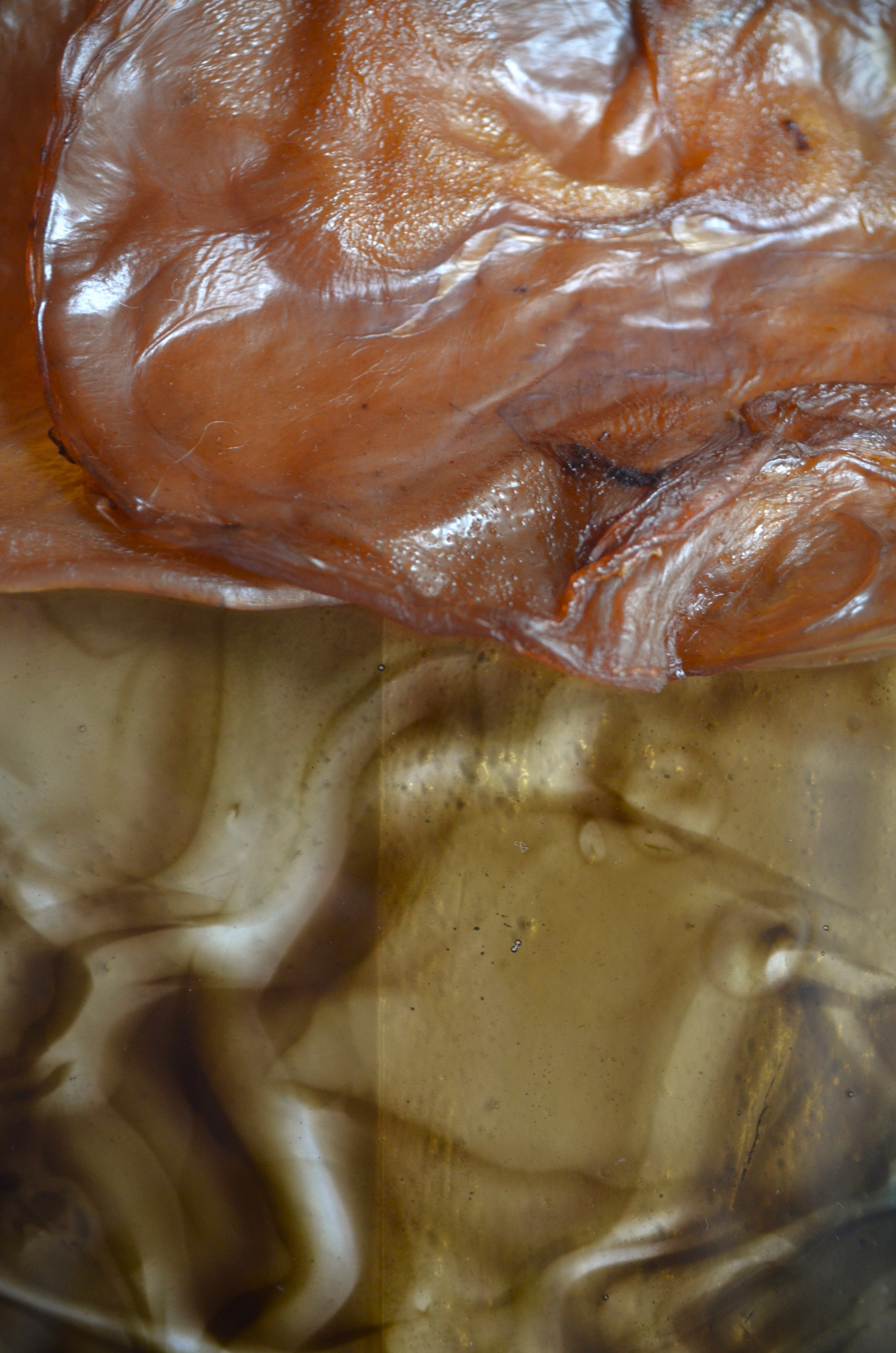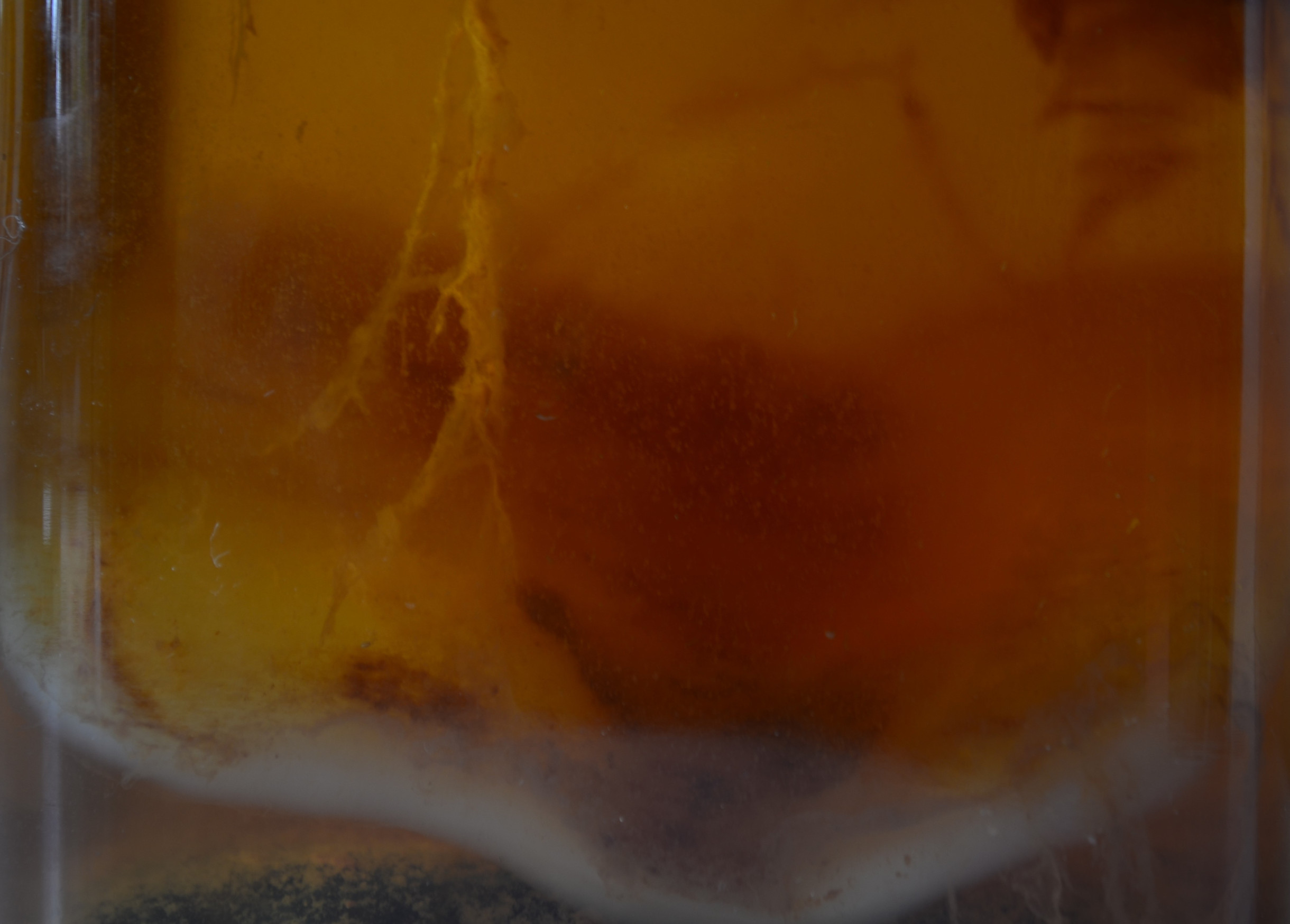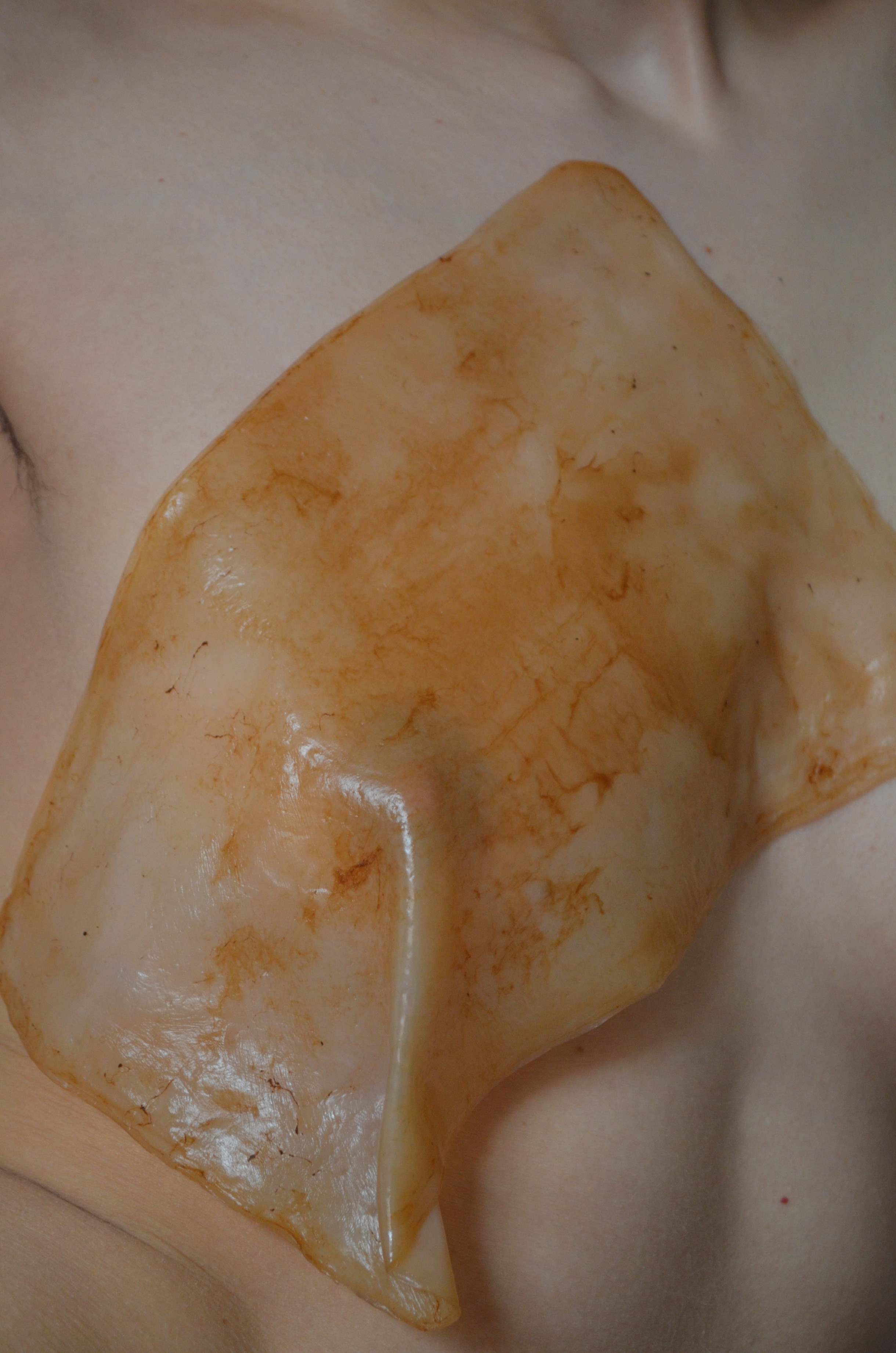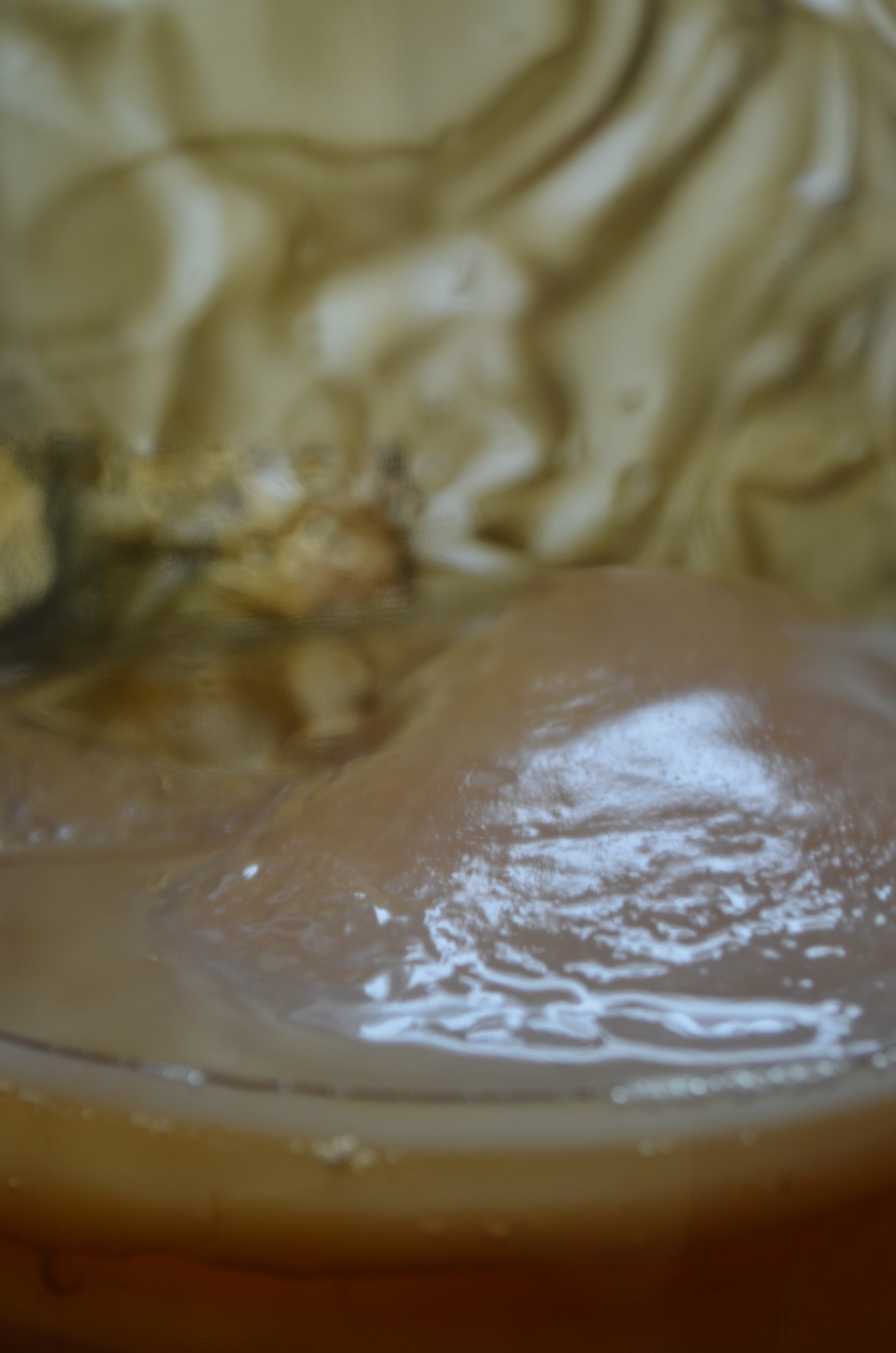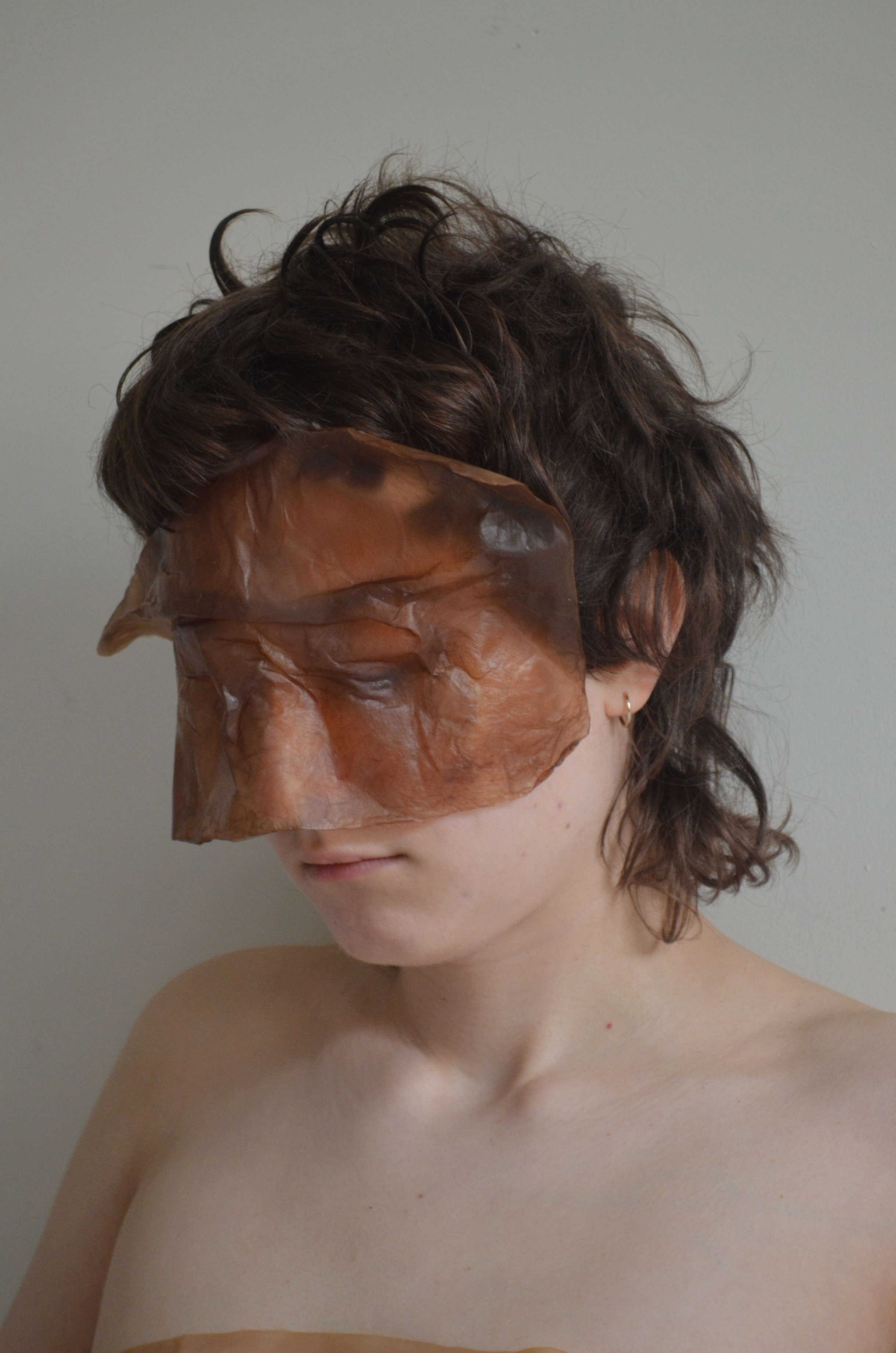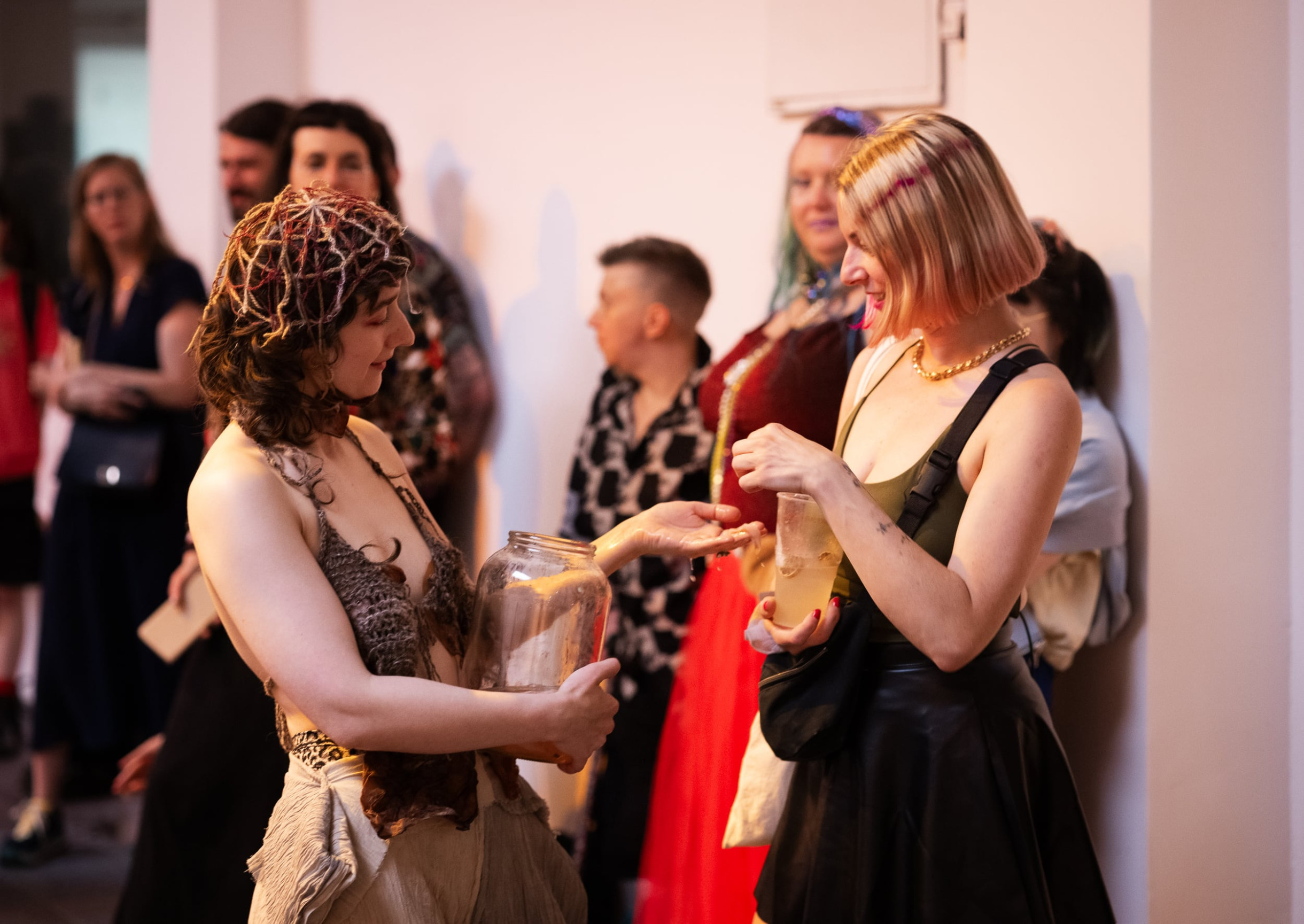Zlata Ziborova↓
Gallery
Links
Studies
| New Media 2, AVU | |
| exchange at TROP Institute for Artistic Research, Ljubljana (Maja Smrekar), Slovenia | |
| exchange at Royal Academy of Fine Arts, Antwerp, In Situ3, Belgium | |
| exchange at UMPRUM, Studio of the Visiting Artist (Maja Smrekar) | |
| exchange at AVU, Studio of Visiting Artist (Paulina Olowská) | |
| AVU, Intermedia I (Milena Dopitová) |
About the work
CorpUs SCOBY
Zlata Ziborova is interested in ecofeminist posthumanist theory and interspecies relations. She works with organic waste, bacteria, yeast, and animals, and uses materials produced by her own body.
In CorpUs SCOBY, she engages in the poetic exploration of interspecies relations and the significant similarities between human physicality and non-human/more-than-human creatures and entities.
Specifically, she explores these relationships in relation to the symbiotic culture of bacteria and yeast (SCOBY for short) that metabolizes sugars and caffeine for the kombucha beverage, a by-product of which is bacterial cellulose that resembles human tissue and skin.
CorpUs SCOBY is founded on the use of a recycled glass container in which various „creatures“ are born in accordance to the volume of the fermentation liquid. The exhibited glass „womb“ thus plays the role of a biological entity offering a place for coexistence and interaction between humans and microbial life. The artist acts as a microbially situated being that explores, tastes, sniffs, talks with, and observes this rich culture in an interdependent relationship – a relationship in which she dissolves her singular „I“ in order to reach the possibility of a plural „we.“ [1]
1. In Ziborova’s work, bacterial cellulose becomes a metonymy of the human microbiome, which is currently undergoing multiple transformations. Some are conscious, while others are the result of changes in climate and environment. From the time when we are embryos floating in amniotic fluid, we are brought together by microbiome and pollution, across continents and biological species, on an evolutionary journey through space and time. Bacteria, yeast, and other entities invisible to the naked eye thus take on the role of witness and facilitator of our common journey.
